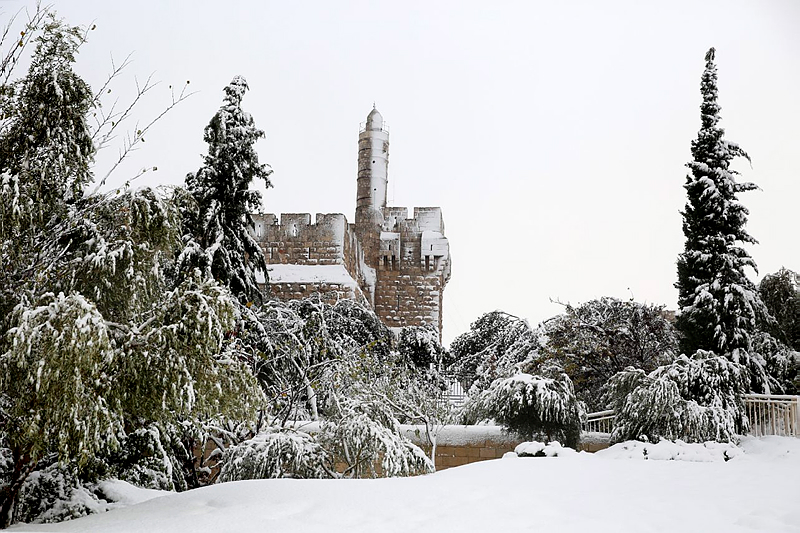Recent archaeological discoveries provide further details on King David’s life in the Land of Israel. (Not that we were doubting it…)
A slab of stone featured at a New York Metropolitan Museum of Art exhibit – titled “Assyria to Iberia at the Dawn of the Classical Age” – sheds new light on the existence of King David.
The Times of Israel reports that the 13-by-16 inch rock, dating back to approximately 830 BCE, is unique for its outstanding inscription, which is categorized as “the earliest extra-biblical reference to the House of David.”
The rock, which was uncovered at the Tel Dan nature reserve in northern Israel, has 13 lines of text inscribed on it, much of it unreadable due to its ancient age. After translation and reconstruction, one can read of the bragging of Hazael, King of Aram-Damascus, who claimed to have slain 70 kings, including those of Israel and the “House of David.”
Eran Arie, curator of Israelite and Persian periods at the Israel Museum, wrote in the exhibit catalog that “there is no doubt that the inscription is one of the most important artifacts ever found in relation to the Bible.” He adds that the fact the inscription was written some 150 years after the reign of King David is a “clear indication that the ‘House of David’ was known throughout the region and that the king’s reputation was not a literary invention of a much later period.”
This, he adds, “clearly validates the biblical description of a figure named David becoming the founder of the dynasty of Judahite kings in Jerusalem.”
The breaks in the stone neither obstruct nor obscure the House of David inscription, which remains “absolutely intact and clear,” according to Ira Spar, professor of history and ancient studies at Ramapo College in New Jersey and a research Assyriologist at the Metropolitan Museum, says The Times of Israel.
This finding may be the most significant archaeological finding to date about King David, but it is not the first.
Israeli archaeologists announced in July 2013 that they had uncovered one of King David’s palaces, contributing to proof of a central Judean authority during that period.
Hebrew University Professor Yossi Garfinkel and Sa’ar Ganor of the Israel Antiquities Authority uncovered what they believe was King David’s Palace at Khirbet Qeiyafa, a fortified city in Judea identified with the biblical city of Sha’arayim. It is located near the modern city of Beit Shemesh.
Archaeologists have spent seven years on the site, discovering unprecedented evidence of the nature of King David’s reign. “The ruins are the best example to date of the uncovered fortress city of King David,” Garfinkel and Ganor say. “This is indisputable proof of the existence of a central authority in Judah during the time of King David.”
By: United with Israel Staff
Free Ebook: 10 Best Places to Visit in Israel
The Land of Israel has provided the backdrop for some of the most important events in human history. From the Old City in Jerusalem to the Sea of Galilee, people from all over the globe visit the Holy Land each year to take in the breathtaking scenery and inspiration of Israel. Now you can experience this beauty for yourself from the comforts of home and maybe plan a trip of your own to Israel. Get the free, exclusive eBook from United with Israel: The 10 Best Places to Visit in Israel.
CLICK HERE TO DOWNLOAD: 10 Best Places in Israel.
Do You Love Israel? Make a Donation - Show Your Support!
Donate to vital charities that help protect Israeli citizens and inspire millions around the world to support Israel too!
Now more than ever, Israel needs your help to fight and win the war -- including on the battlefield of public opinion.
Antisemitism, anti-Israel bias and boycotts are out of control. Israel's enemies are inciting terror and violence against innocent Israelis and Jews around the world. Help us fight back!
